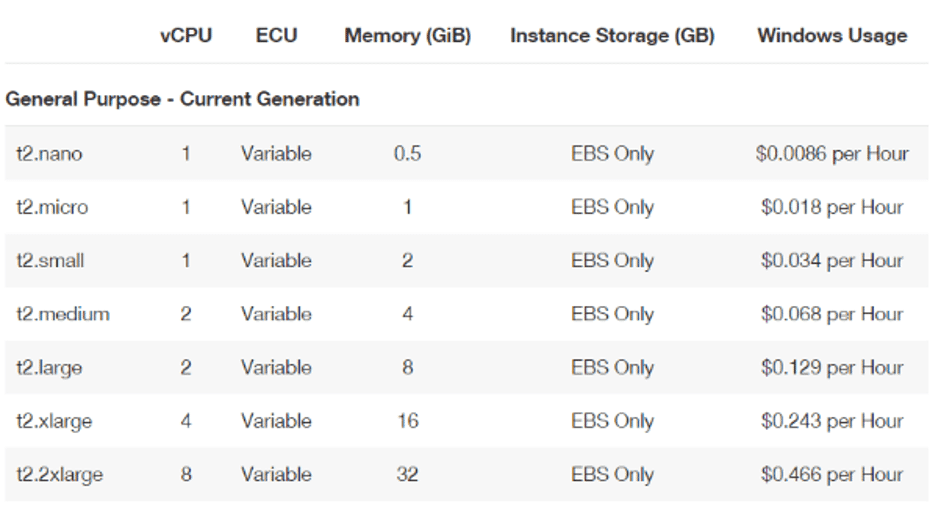
Data transferįinally, you'll pay additional fees for transferring data in and out of Amazon Redshift. Redshift Serverless also includes Concurrency Scaling and Redshift Spectrum features for free. The price depends on your region, but customers in the US can expect to pay from $0.35 to $0.50 per hour. These are credits for an hour of processing time, billed on a per-second basis with a 60-second minimum. And instead of charging based on the nodes you need, it bills based on Redshift Processing Units (RPUs). This service handles all capacity behind the scenes, scaling up or down as you need. What if you want to use Redshift but don't want to worry about managing Redshift clusters and compute nodes yourself? Keep in mind that for large datasets that only need infrequent queries, it may be more affordable to store data long-term in S3 and use Redshift Spectrum to scan it when necessary. While the exact price depends on your region, most US users can expect to pay around $0.025 per gigabyte per month.

Managed Storage does not include backup storage, which is charged separately. Redshift Managed Storage prices come only with RA3 nodes and are billed at a per-gigabyte rate monthly.

The pricing model depends on the size of your Amazon Redshift cluster-the number of nodes and type of nodes you're using-and the region you're in. The RA3 node offers elastic resizing which lets you scale your cluster size up and down instead of reallocating the workload across several clusters. This DS2 type of node is still available, though outdated, and doesn't offer the same features as the new RA3 node. Users in a US region can expect to pay around $1.09-1.20/hour for the lowest-power, 4-vCPU ra3.xlplus node and up to around $13-14.50/hour for the highest-power 48-vCPU ra3.16xlarge node.Īmazon launched RA3 nodes in 2019 to replace dense storage nodes (DS2), which used hard disk drives (HDD). The RA3 node essentially separates compute and storage architectures, similar to the default setup on Snowflake and BigQuery. These use a unique split that stores data for fast access in SSD storage while keeping the rest in Amazon S3. Users in a US region can expect to pay around $0.25-0.35/hour for the lowest-power, 2-vCPU dc2.įor large node, users can expect to pay around $5-6/hour for the highest-power 32-vCPU dc2.8xlarge node.įor data sets over one terabyte, use RA3 nodes. DC2 nodes have different capacities measured as virtual CPUs (vCPUs). This stands for "dense compute" and uses a fast solid-state drive (SSD) for data storage. There are separate node types for different use cases, and each cluster can only contain one type of node.įor data sets under one terabyte, use DC2 nodes. Redshift provisioned data warehouseĪmazon Redshift divides its computing resources into units called nodes, which can be grouped together in a cluster. And Redshift has a very broad menu to choose from. One of the reasons why Amazon Redshift prices seem so complex is that there's just so much to choose from.Īsking how much it costs to use Redshift is like asking how much it costs to eat at a restaurant-it depends on what you order.

In fact, Amazon Redshift pricing is notoriously difficult to understand. It tends to be one of the most affordable data warehouse options, with prices typically lower than other cloud-based warehouses like Google BigQuery or Snowflake.īut affordable pricing doesn't mean Redshift costs are simple. Redshift is more expensive than Amazon Relational Database Service (RDS), but it offers a more robust feature set and better scalability.Ĭompared with other data warehouses, Redshift is not expensive at all. Redshift also stands apart due to its deep integration with other tools in the AWS suite, including Amazon Simple Storage Service (S3). Redshift accepts structured and semi-structured data formats and virtually any amount of data, from a few gigabytes to several petabytes.įor an idea of Redshift's big data capabilities, Nasdaq uploads 70 billion stock trading records to Redshift at market close every day, then completes analysis queries on all 70 billion records before the market opens the next morning.īut scalability isn't its only strength. It's a scalable and cost-effective platform built for high-performance columnar data warehousing in SQL. Redshift is a fully managed, petabyte-scale, cloud-based data warehouse that's a part of Amazon Web Services (AWS). So today, we're going to simplify all the fine print and break down just how much, exactly, Redshift charges. Just getting a basic estimate of what your data usage will cost requires a half-dozen questions. Amazon Redshift is the world's most widely used data warehouse.īut before you decide to use Redshift, you'll need to learn if it works for your budget.Īnd unfortunately, Redshift pricing is anything but simple.


 0 kommentar(er)
0 kommentar(er)
